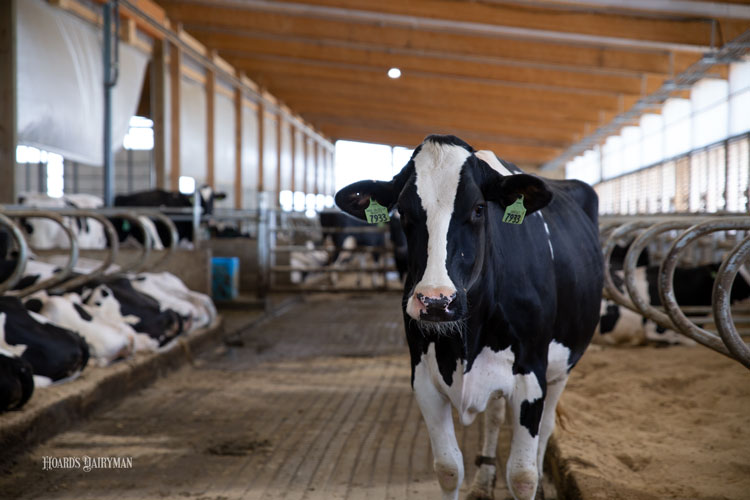
Dairy cows may be the hardest-working livestock species. After a productive life making milk, most cows go on to a “second career” providing beef as culled cows. In fact, anywhere from about 6% to 8% of U.S. beef in a typical year is from cull dairy cows.
That cow’s journey from dairy farm to processing plant is not always smooth, though. A lack of proactive decision making can result in shipping animals that are unfit for transit and compromising their welfare, explained Lily Edwards-Callaway in a recent Dairy Cattle Welfare Council webinar.
The transport process of slaughter can be a difficult one because of multiple handlers during loading and unloading events, mixing with unfamiliar animals, long journeys, and times without feed, water, or milking. Unfortunately, some cull animals are already compromised and unprepared to deal with these additional challenges. In a 2016 study by the National Beef Quality Assurance program of slaughtered animals, 9% of dairy cows were extremely thin (body condition score of 2 or 1), 23% were mobility-challenged, and 43% had a defect, such as swollen joints.
“Many of the cull cows that leave the farm should have been culled earlier, marketed sooner, or euthanized,” stated Edwards-Callaway, who researches animal welfare at Colorado State University.
Make the right call
There are many decision-making opportunities near the end of a dairy cow’s productive life, Edwards-Callaway explained. This is particularly true if she is culled and then passed between multiple handlers, including truck drivers, sale barn employees, and meat-packers, all of whom take on responsibility for the animal’s welfare.
But when to cull is a difficult decision for the farmer to make. Waiting too long to send a cow to slaughter is not only detrimental to the animal’s welfare but also compromises meat quality. Extremely sick or injured animals are more likely to have bruises and lesions from the journey on their carcasses, assuming they don’t go down before making it to the plant.
How long is too long?
Determining if an animal is “fit for transport” is not federally regulated in the U.S. as it is in other countries, such as Canada, Edwards-Callaway noted. A number of industry groups, such as the Farmers Assuring Responsible Management (FARM) program, offer guidances to evaluate mobility, body condition, injury, udder condition, dehydration, proximity to calving, and other disease-related characteristics to gauge if a cow should be shipped.
If an animal does not meet these recommendations, then Edwards-Callaway encourages timely euthanasia. She recognized this can be a challenging path to take for a variety of reasons physically (if caretakers are not trained), mentally (may seem like a failure of animal care), and economically (losing out on potential sale price). However, she advised that sending compromised animals to slaughter does not meet the needs of the cow, the meat processor, or the consumer. The most effective treatment option should be evaluated based on the animal’s chances of recovery.








